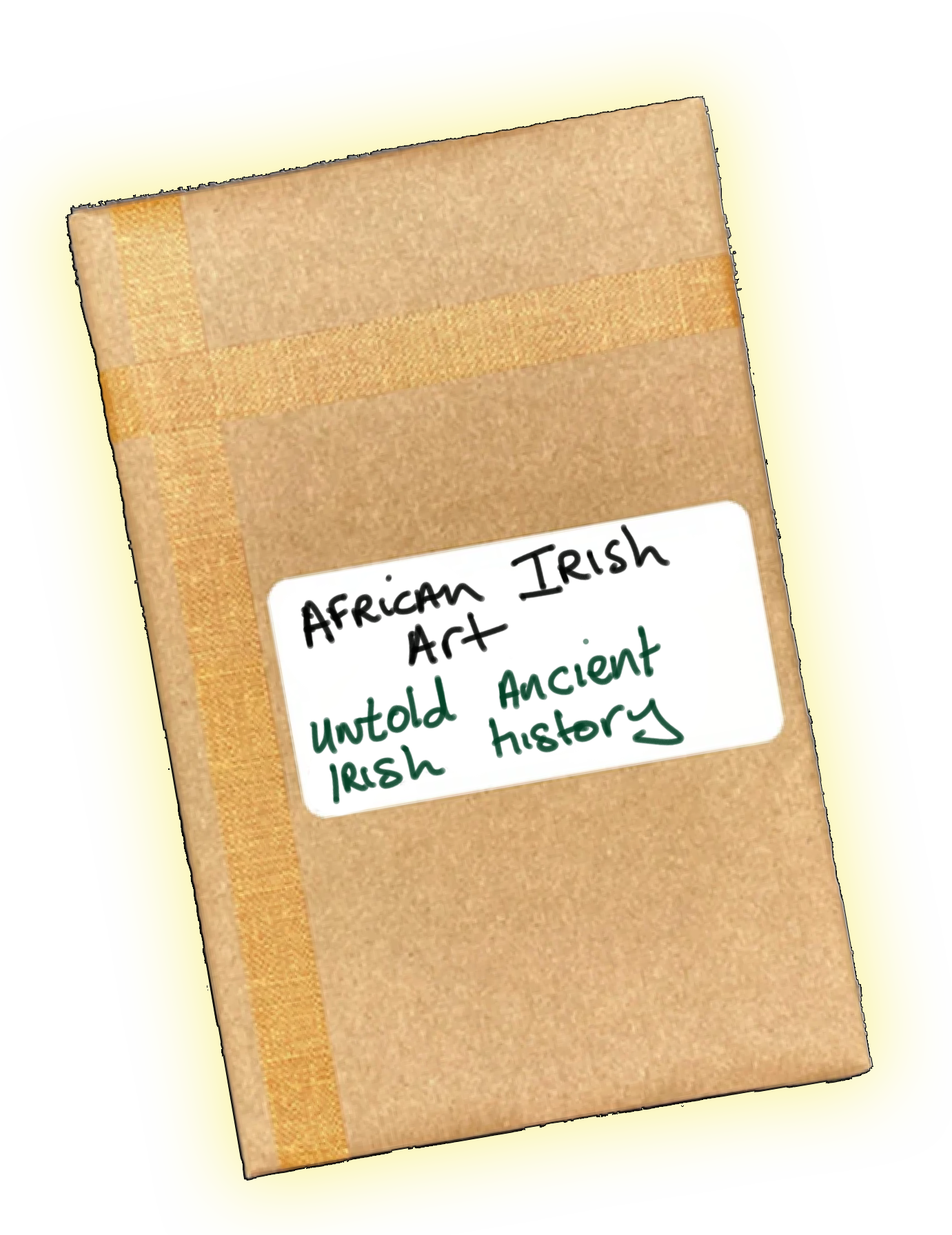AFRICAN IRISH ART
An artistic impression of old Ireland 50 thousand years ago, before the arrival of The Celts and The Romans
View thru Art
Art is a pure medium of expression and communicator and the recent Covid lockdown afforded me the opportunity to engage in a way that was not possible before then. My dismal efforts to illustrate the new findings came from a profound sense of desperation that I found myself in, when facing the adversity of Mass Media Control by others, including The State of the Republic of Ireland. Homo-Sapiens had few words and mostly centred on body parts that formed their earliest expressions and these pieces illustrate the minds of these ancient people like has never been done before.
Galerie des Arts
- Les Premier Impression du Monde
Gangani
(See Ptolemy Map)
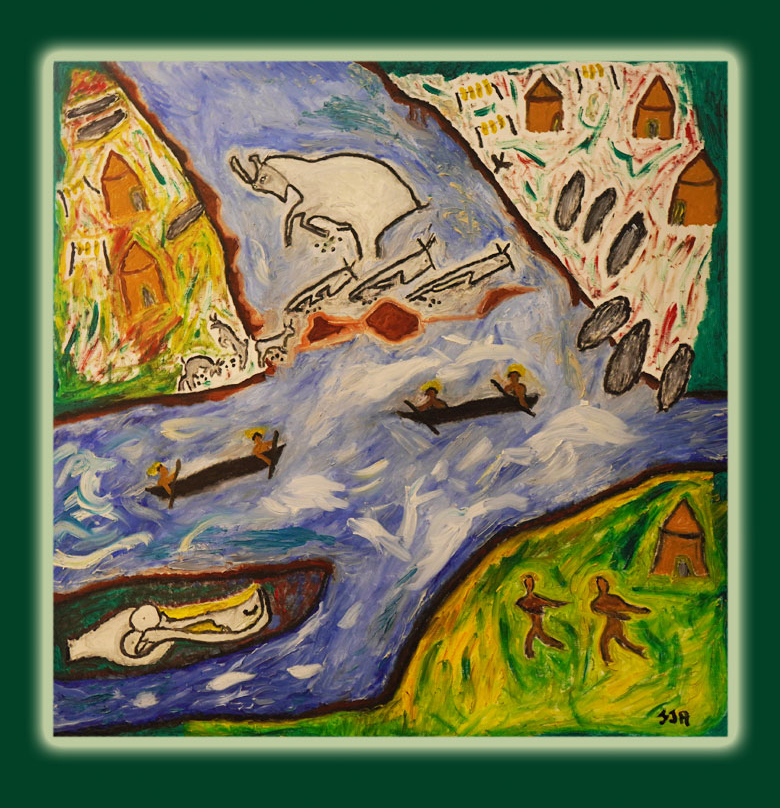
Gangani - First Major Settlement
This illustration shows a tribe of men in flat boats and fishing and living along the river bank. It indicates the local Gandelow and Gaal fishing boat used along the shores of the Shannon Estuary.
Gangani aka Lymericke, Limerick, Ireland is possibly one of the oldest settlements in Western Europe and has a very good reason to claim that. It is located furthest in the vast deep safe Estuary feeding into the Atlantic from which all the Gaal boats arrived from Africa, allowing them to traverse the vast hinterland of Ireland that reaches to all parts of the island.
Macolicon
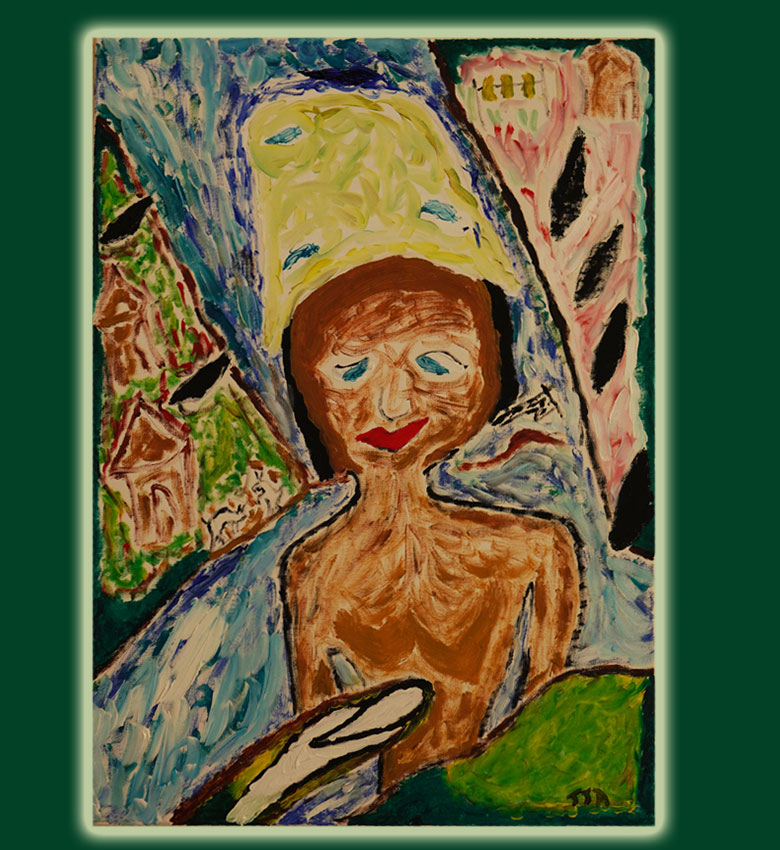
Macolicon – (See Ptolemy Map further down this page for more)
The Elbow Terminal for Fashionista or The Left Bank
Macolincon is the location point for tribes to meet socially and to allow their offspring to mingle and engage in intensive copulating that involves the arts of attraction and fashion and the exchange of gifts. The actual location is not on the island in Lymericke but at that point of the curraghgower falls known as the elbow and located on land. It is an ongoing social activity throughout the year and its location is convenient for all tribes that arrive by boats from the heartlands of the island of Ireland and the ocean. Due to this social event fashion / fabric designers and couture plied their trade with wealthy primal hunters. This may have been the precursor to the renowned famous Limerick lace fabrics.
Haaka
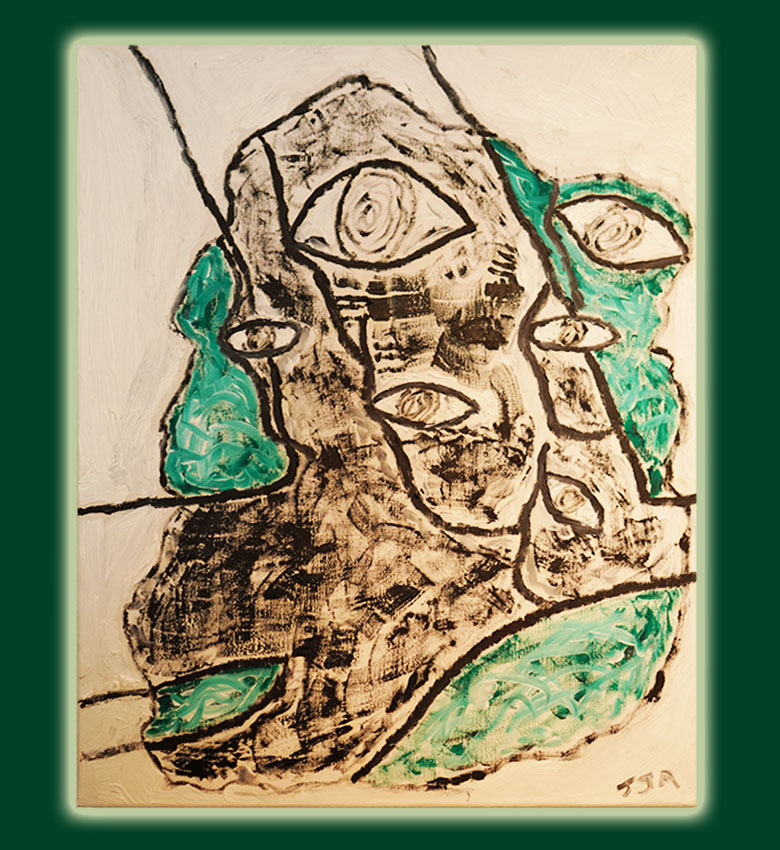
Haaka is Gaelic. This is an art illustration depicting a missing lost page of ancient history set against a white paper background that translates to be the ancient Citi of Lymericke:
The use of the word Aaaka ( there is no ‘h’ in Wolof or Gaelic) was often in the form Oo Aaaka Tari, indicating a sentence, meaning the person to call the tribe to combat. Today, it is spoken faster and it is used in Gaelic to mean a word only, and spelt Uachtarain, meaning officially: the President.
Ptolemy Map
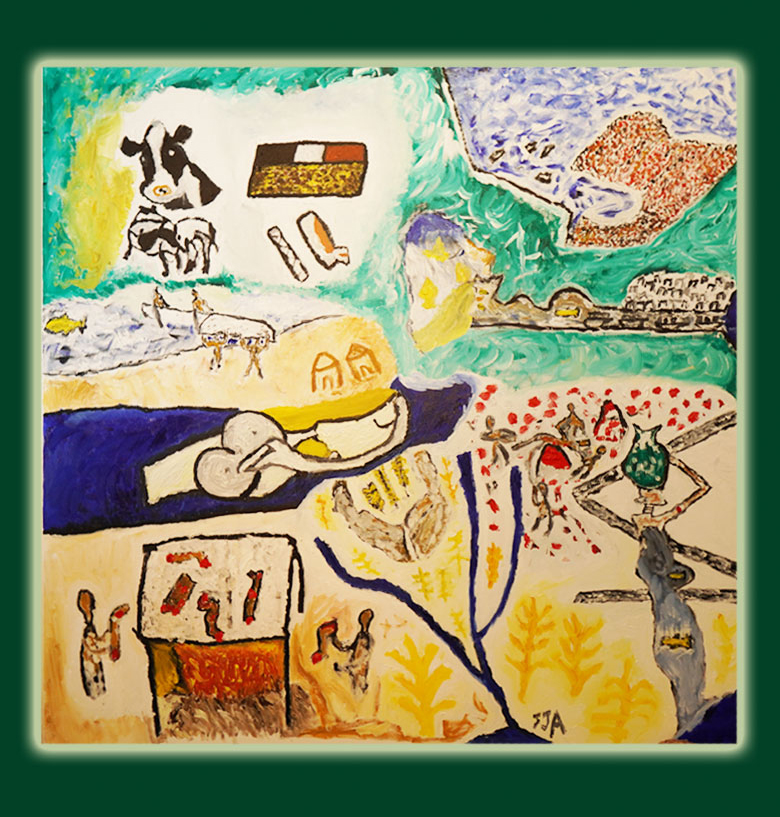
Ptolemy Map of Ireland
(Map Published ad 100 – 150 in Alexandria, Egypt – interpretation of words shown on map are unknown and with inaccuracies)
There is no official Gaelic on this map.
This Illustrative Art was created in 2020 in Limerick.
Click the READ MORE icon for a full description and explaination of this painting.
Black Hunting
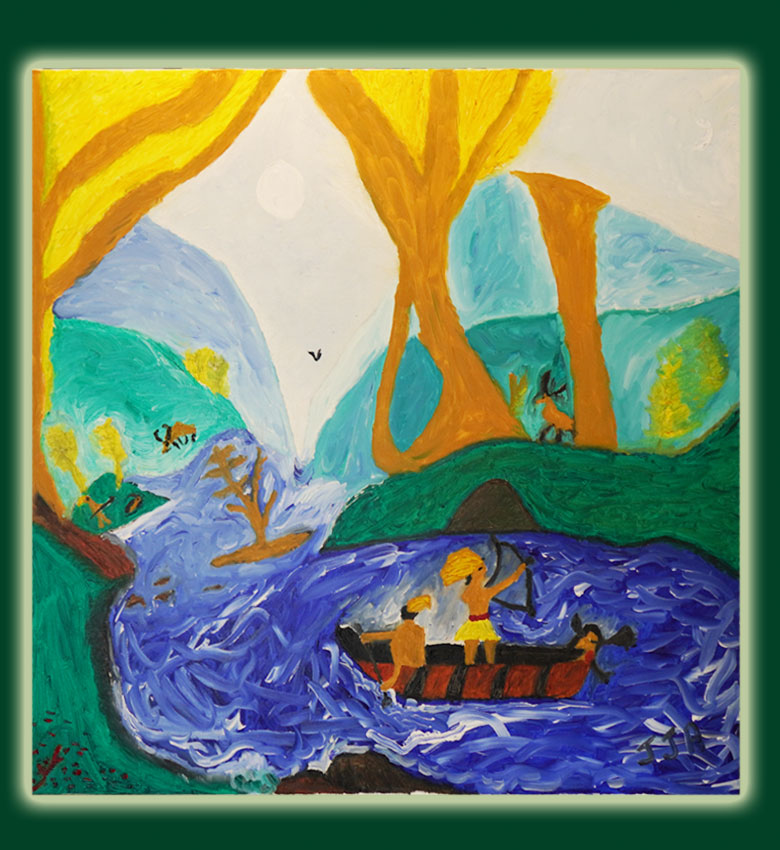
Black Hunting - a fiscal encounter.
Offically the words income Tax and Cáin incaim mean the same: income Tax. Homosapians had a different idea.
The original settlers on the isles made their living initially by hunting and fishing before living off the land as farmers. Some hunting involved killing deer in the forests and bringing the meat and fur/ skin home.
Moving around by boat was faster then and allowed the hunter to choose more of the kind of animal they wanted. Their hunting terminology spoken by their tribes to do their business among themselves as a team remains with us today, in our every-day speech
Fear Marbh
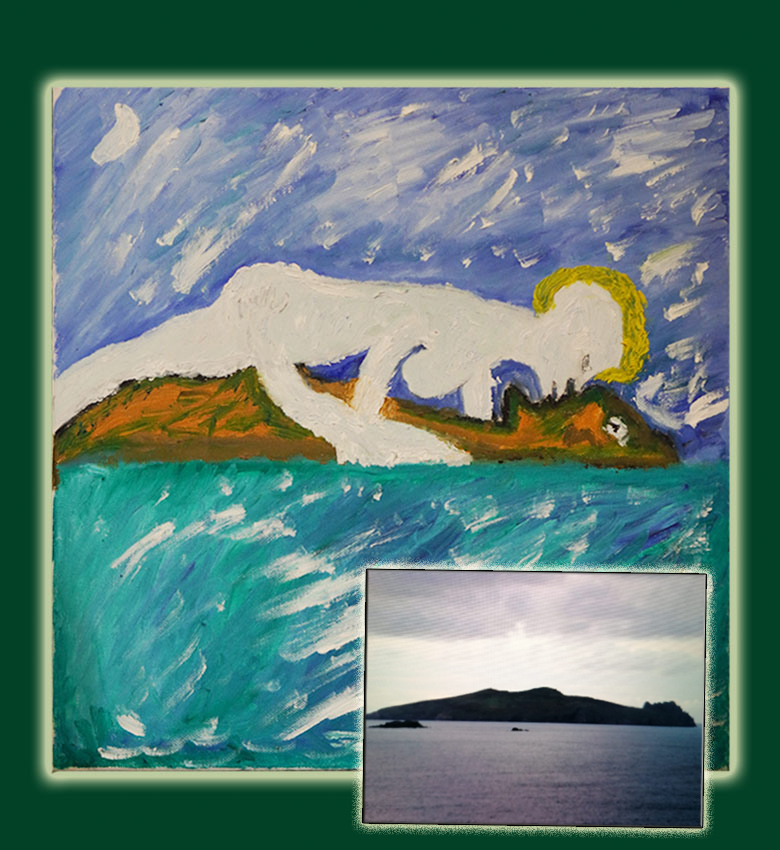
Fear Marbh (The Dead Man).
The Illustration shows a man lying on his back with clouds enveloping him in the shape of a
woman and the evening sun in the background. When homo-sapiens arrived they had a
different narrative and gave it a name meaning a contented man that must be respected in
his deed. This name is found in the present official name Inishtooskert.
Inishtooskert (Official name of Island near Dingle, Co. Kerry and no meaning).
Locally it is referred to as the Dead Man/ Sleeping Giant or in Gaelic: Fear Marbh.
Inish means an island or place
Tuux
(Wolof) = Content
Kersa (Wolof) = Respect / Self Control
Al Li Liú
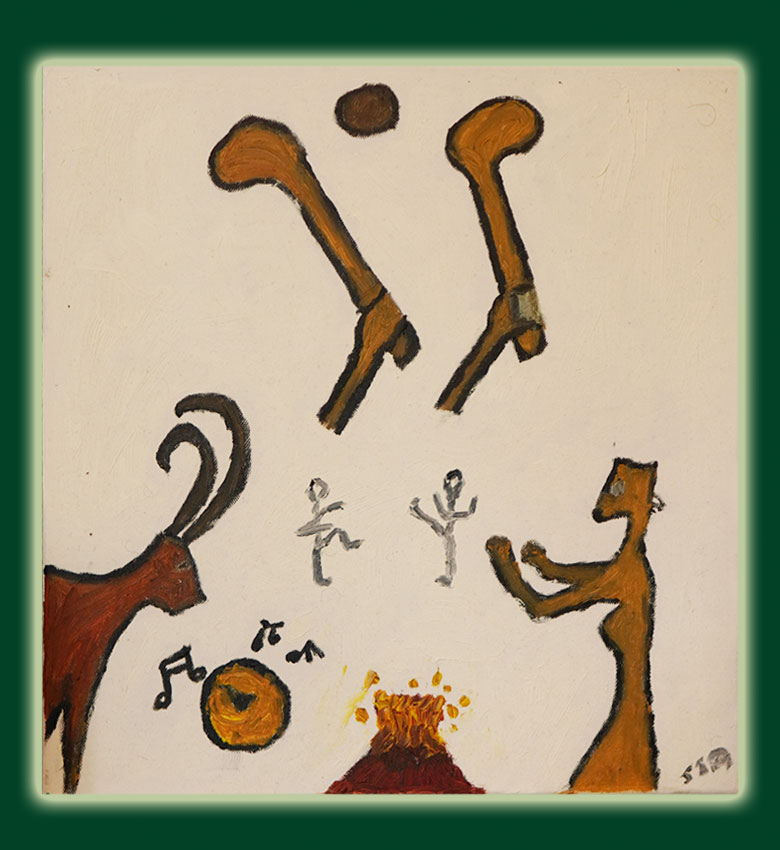
ALLiLiú - Gaelic/ Wolof from the jungle
This illustration combines the evolution of the words ‘Al Li Loo’ and how it
evolved on The Isles of Britain and Ireland after arriving from West Africa.
Included in this illustration are found: the bushfire, dancing, music, angry wife, goat, and the Gaelic sport of hurling.
Caveman
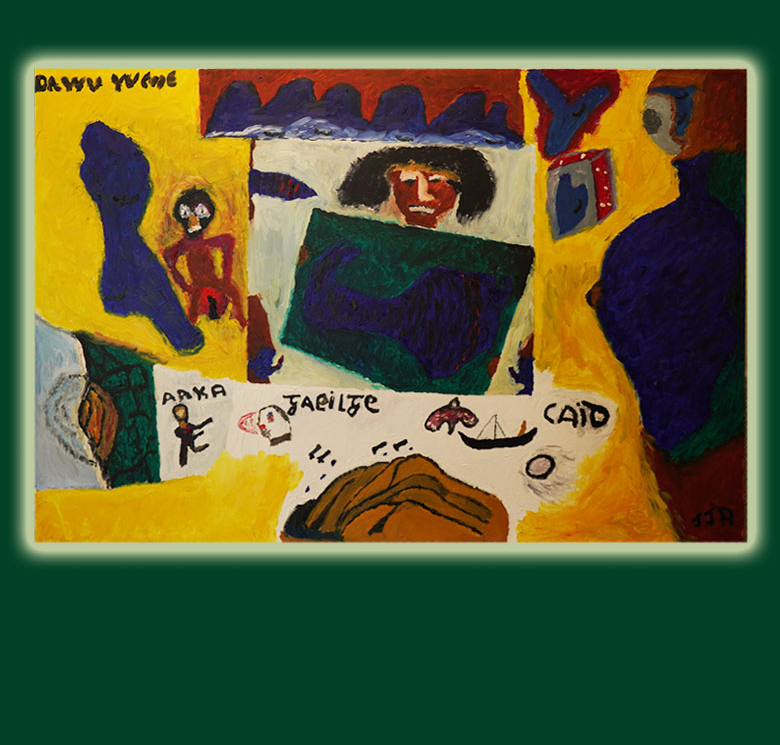
This illustration depicts various selected locations around the island of Ireland that were given names by Black Homo- Sapiens and whose names survive today. This caveman depiction is using bright colours from local plants and other wild growth. The following are the various locations and their original referencing can be found in the book:
Beginning from top right hand corner: Rineanna (now Shannon Airport), Lough Ree, Lough Oular, Lough Erne, Lough Acoose, McGillyCuddy Reeks,Lough Yganavan, Lough Nambrickdaring, Lough Cong and Lough Conn.
Also included are the Semi-Circle Forth on Inishmore Island and Síle na Gi.
The Shannon

McGillycuddy Reeks
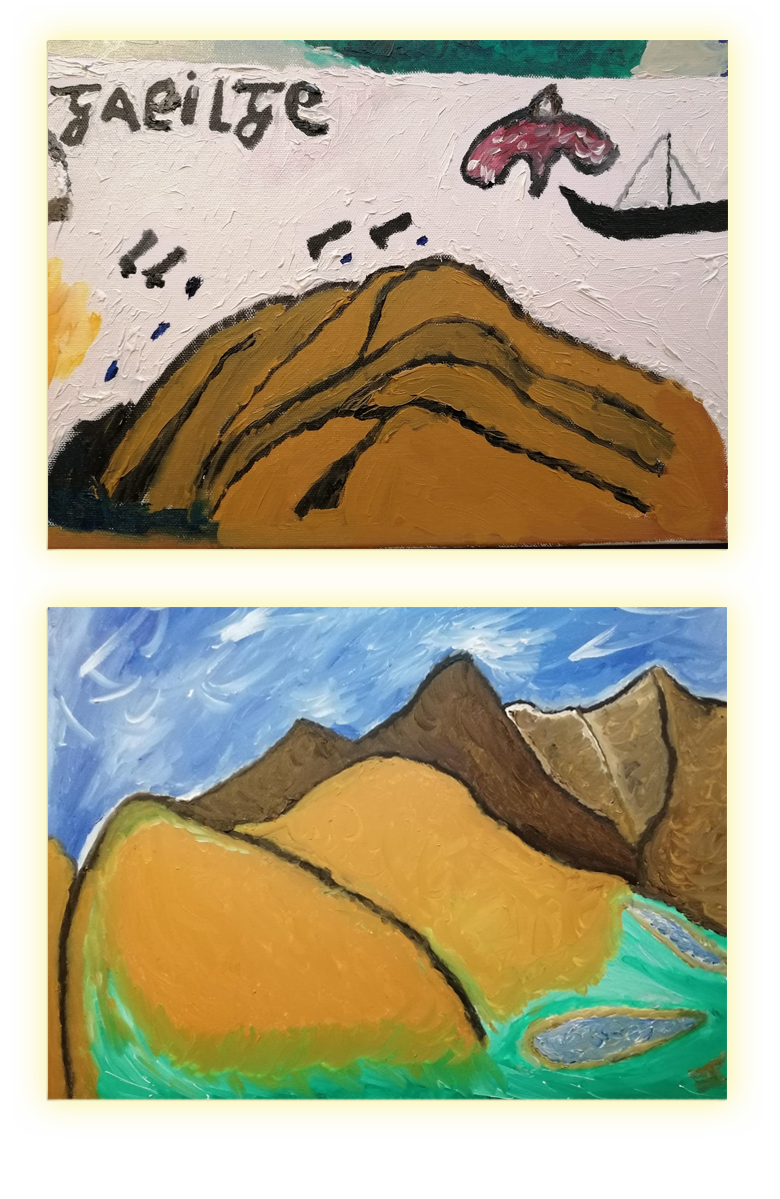
MaGillycuddy (Reeks) Killarney, Kerry
Maa (Wolof) = Touching / Copulating;
Guy (Wolof) = Very; and Caadi
Caadi (Wolof) = roll along the ground;
intensive copulating rolling along the ground – a mountain range.
Lough Gourach, Killarney, Co. Kerry
Lok (Wolof) Lake;
Guu (Wolof) Climax / Organism,
Raaca (Wolof) – to spread;
Indicating five rivulets flowing into the small lake.
Carrauntoohil (Co. Kerry)
Can (Wolof) - stucked;
Toog (Wolof) sit in one place – settle. (see magillycuddy)
Lough Yganavan
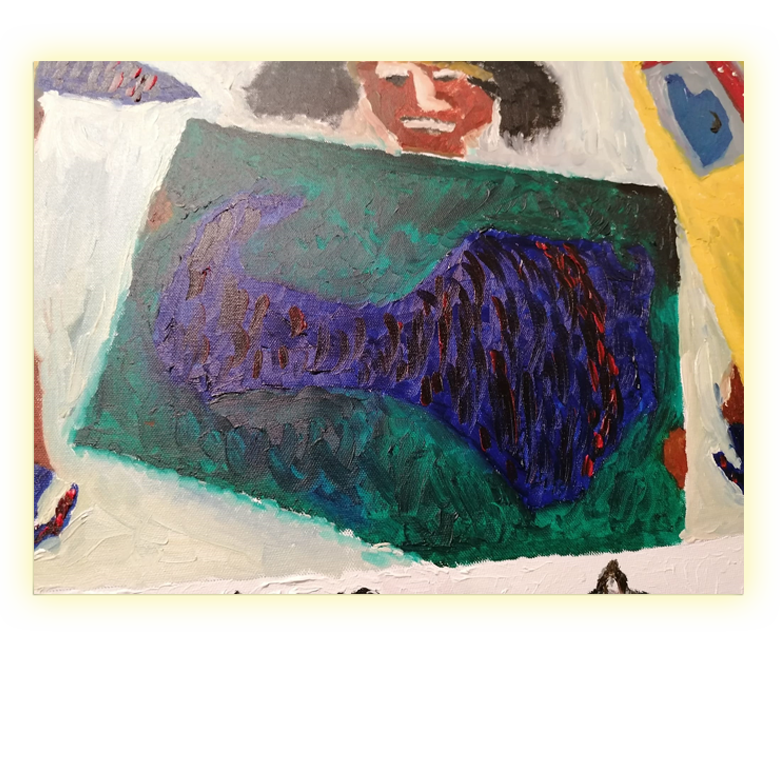
Lough Yganavan (Co. Kerry)
Lok (Wolof) Lough;
Yaaga (Wolof) to stay long;
Ganda (Wolof) Penis (*see Map of Lake) Imagine full lake.
Lough Nambrackdaring (Kerry)
Lok (Wolof) Lough;
Nam (Wolof) Immature- This indicates the nearby lake depicts an immature penis (*see map).
Colorus Bay
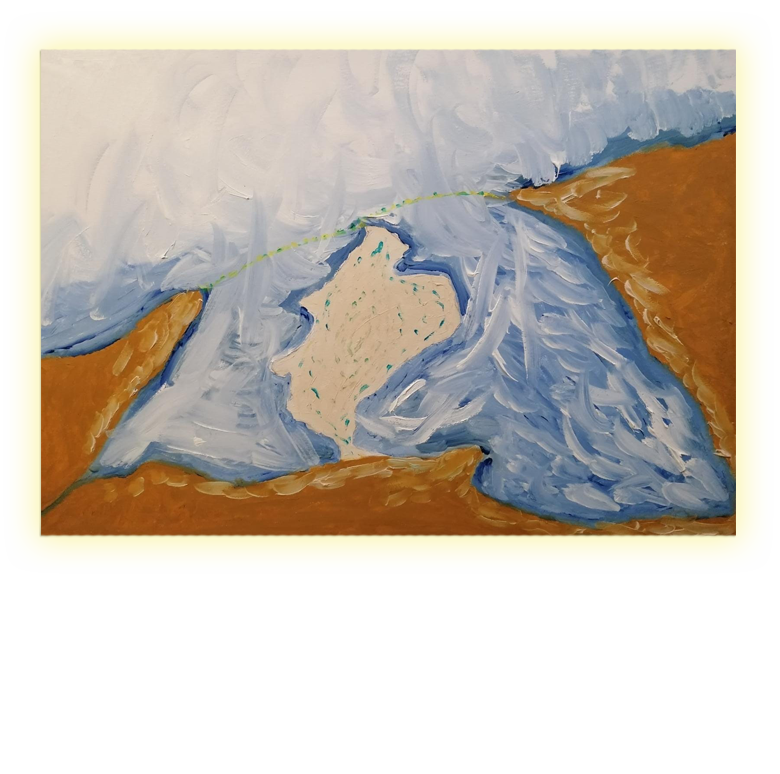
Colorus Bay (Co. Kerry)
Collorus (Co. Kerry):
Cóola(Wolof)/ Clittoris;
Rus (Wolof) – ashamed- see map.



